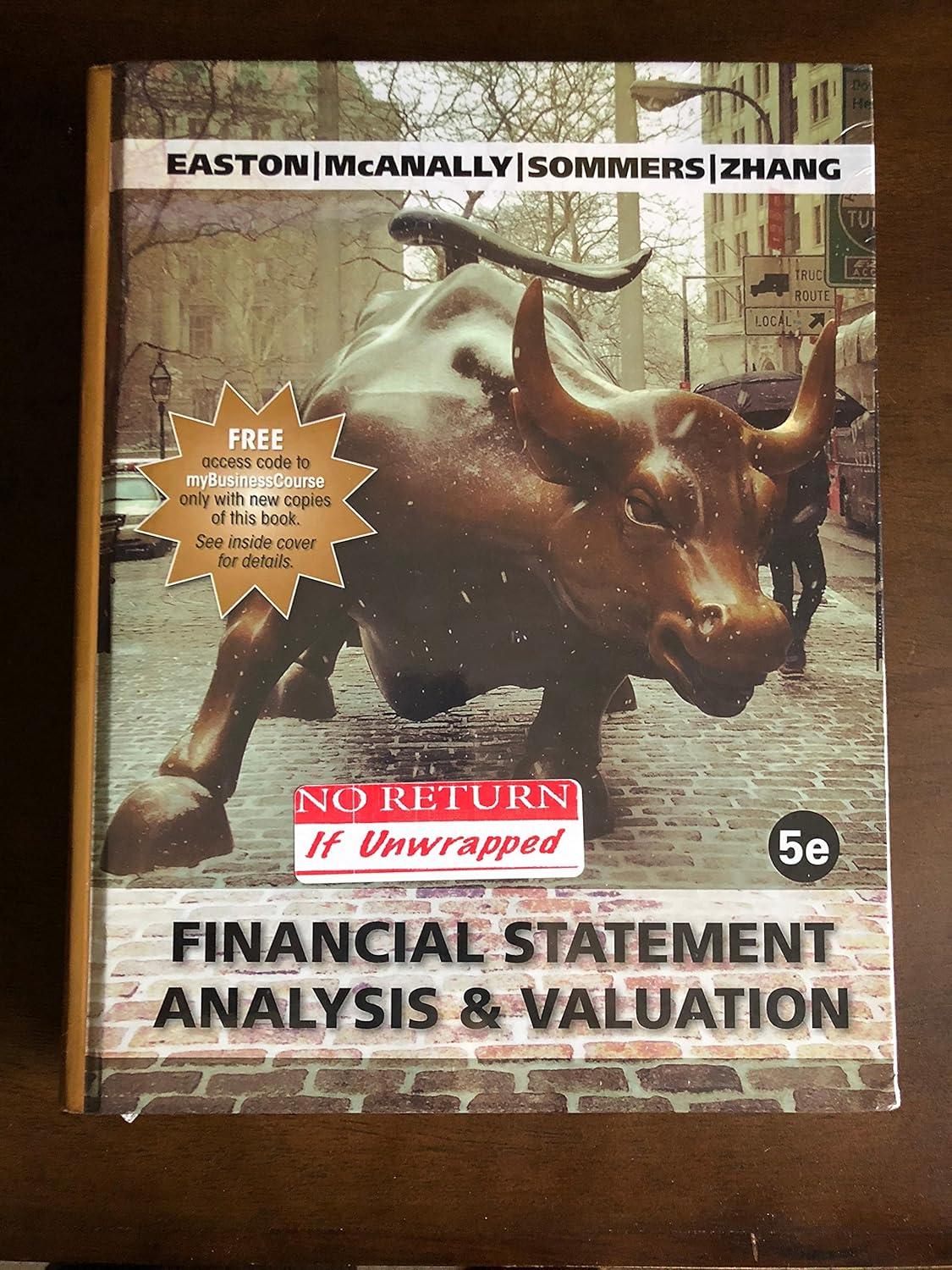Estimating Share Value Using the ROPI Model Following are forecasted sales, NOPAT, and NOA for Colgate-Palmolive Company
Question:
Estimating Share Value Using the ROPI Model Following are forecasted sales, NOPAT, and NOA for Colgate-Palmolive Company for 2016 through 2019.
$ millions Reported 2015 Forecast Horizon 2016 2017 2018 2019
????ales???? ???? ???? ???? ???? ???? ???? ???? ???? ???? ???? ???? ???? ???? ???? ???????????????????????????? ???????????????????????????? ???????????????????????????? ???????????????????????????? ????????????????????????????
????O???????????? ???? ???? ???? ???? ???? ???? ???? ???? ???? ???? ???? ???? ???? ???????????????????? ???????????????????? ???????????????????? ???????????????????? ????????????????????
????O???? ???? ???? ???? ???? ???? ???? ???? ???? ???? ???? ???? ???? ???? ???? ???? ???????????????????? ???????????????????? ???????????????????? ???????????????????? ????????????????????
Required
a. Estimate the value of a share of Colgate-Palmolive common stock using the residual operating income
(ROPI) model.
b. Colgate-Palmolive stock closed at $67.22 on February 18, 2016, the date the Form 10-K was filed with the SEC. How does your valuation estimate compare with this closing price? What do you believe are some reasons for the difference? What investment decision is suggested from your results?
D14-31. Management Application: Operating Improvement versus Financial Engineering Assume that you are the CEO of a small publicly traded company. The operating performance of your company has fallen below market expectations, which is reflected in a depressed stock price. At your direction, your CFO provides you with the following recommendations that are designed to increase your company’s return on net operating assets (RNOA) and your operating cash flows, both of which will, presumably, result in improved financial performance and an increased stock price.
1. To improve net cash flow from operating activities, the CFO recommends that your company reduce inventories (raw material, work-in-progress, and finished goods) and receivables (through selective credit granting and increased emphasis on collection of past due accounts).
2. The CFO recommends that your company sell and lease back its office building. The lease will be structured so as to be classified as an operating lease under GAAP. The assets will, therefore, not be included in the computation of net operating assets (NOA), thus increasing RNOA.
3. The CFO recommends that your company lengthen the time taken to pay accounts payable (lean on the trade) to increase net cash flows from operating activities.
4. Because your company’s operating performance is already depressed, the CFO recommends that you take a “big bath;” that is, write off all assets deemed to be impaired and accrue excessive liabilities for future contingencies. The higher current period expense will, then, result in higher future period income as the assets written off will not be depreciated and your company will have a liability account available to absorb future cash payments rather than recording them as expenses.
5. The CFO recommends that your company increase its estimate of expected return on pension investments. This will reduce pension expense and increase operating profit, a component of net operating profit after tax (NOPAT) and, thus, of RNOA.
6. The CFO recommends that your company share ownership of its outbound logistics (trucking division)
with another company in a joint venture. This would have the effect of increasing throughput, thus spreading overhead over a larger volume base, and would remove the assets from your company’s balance sheet since the joint venture would be accounted for as an equity method investment.
Evaluate each of the CFO’s recommendations. In your evaluation, consider whether each recommendation will positively impact the operating performance of your company or whether it is cosmetic in nature.
Step by Step Answer:

Financial Statement Analysis And Valuation
ISBN: 9781618532336
5th Edition
Authors: Peter D. Easton, Mary Lea McAnally, Gregory A. Sommers






